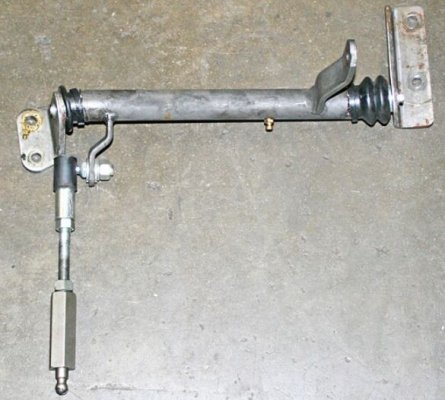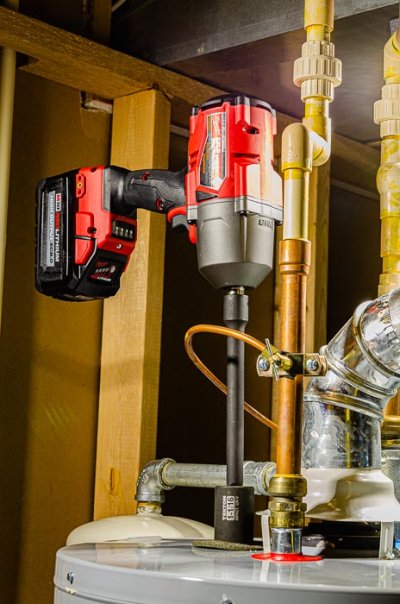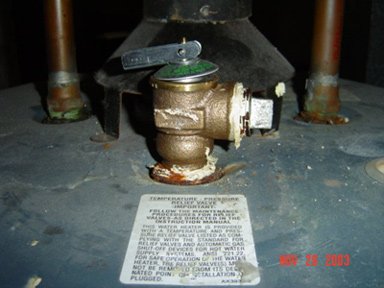I just got one of those and a set of impact sockets a few days ago in anticipation of changing out the anode rod on a regular basis. About five months ago we bought the third water heater in 17 years here, including the one that came with the house. That lasted ten years. The second one only lasted six years, just beyond the warranty, so that got me to do some reading about water heaters. With back, knee, and shoulder issues my days of wrestling water heaters in and out of place are long gone and the $1,400 for a new gas water heater, installed, got my attention.
As an aside, if you haven't bought a gas water heater recently get ready for some sticker shock. The newer ones have changes to the combustion chamber to help prevent flames ignited by the burner, such as gasoline fumes on the floor, from escaping back into the room. That's the theory anyway. Here's an explanation:
What is Different About FVIR Water Heaters? | The ASHI Reporter | Inspection News & Views from the American Society of Home Inspectors
It turns out water heater maintenance wasn't a big deal where we used to live because the water was naturally soft and they lasted 20+ years as a matter of course. That is not the case here, where we have hard water and therefor also run a water softener, which adds corrosive salt to the water, hence our six-year water heater. (BTW, the "12-year warranty" heaters have either two anode rods or an extra-thick one installed when new.)
There are lots of youtube videos on how to replace an anode and almost all of them emphasize how hard it is to get one out if it's been in place for a number of years, and techniques involve 4-foot cheater bars and lashing the heater to the wall to keep it from rotating. Yikes!

No wonder nobody wants to change it. Many people recommend against using an impact wrench because of concern about damaging the porcelain liner but I found no empirical information from water heater manufacturers either pro or con except one. A.O. Smith, who made the heater in our basement, actually
recommends using an impact wrench to loosen the anode, and then use a regular ratchet wrench to finish removing it. When I found that (which of course I can't find again or I'd post the link) I called the company to confirm it, which a representative did.
So now I have a schedule posted on the water heater as to when it is to be flushed, and the anode replaced. The plumber who installed it suggested the anode be replaced, or at least checked, every two years. The manual says check at six months and annually thereafter. I'll start at flushing at six-month intervals (and have a new valve and pipe wrench handy, since they don't always want to fully close again). The anode I'll check annually until I get a feel for how long it lasts, which I suspect won't be long given the longevity of the last water heater.
Anyway, here's a photo of the model 2767 1/2" impact wrench from Milwaukee that advertises 1,400 ft/lbs of torque. I figure after replacing two anode rods I'll be ahead of the game vs. paying a plumber to do it. And hopefully I'll get to keep this water heater for 20+ years. It seems the standard size for the nut on top of the anode is 1 1/6". No one mentioned a different size.
Oh, and at Home Depot a new anode is ~$14.00 and up. There are also powered anode rods that supposedly don't need replacing because they're not sacrificial. I'm thinking about that but have more reading to do. Also, I discovered that there is such a thing as food grade anti-seize which I intend to use when I do change out the anode rod.
https://www.homedepot.com/p/Super-L...ant-Bottle-with-Syncolon-PTFE-48008/304709597




